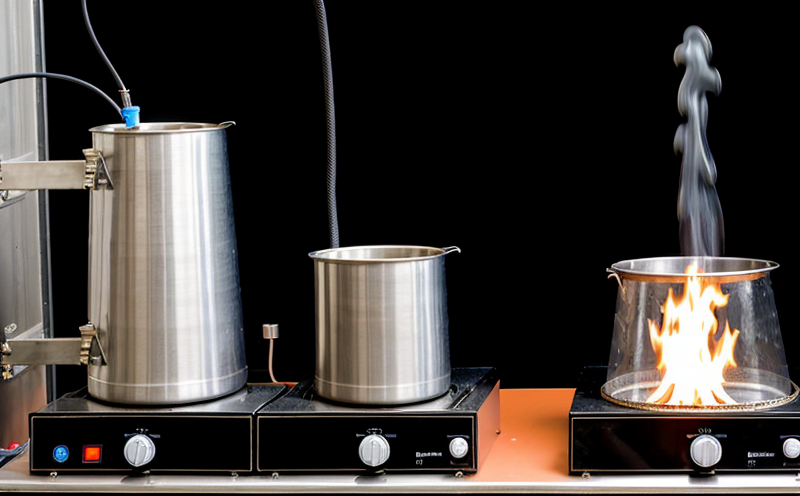Calorimetric Analysis of Polymers
In fire safety testing, calorimetric analysis plays a crucial role in assessing the thermal stability and flame retardancy properties of polymers. This service involves measuring the heat release rate (HRR), total heat released (THR), and other relevant parameters under controlled conditions.
The process begins with careful selection and preparation of polymer samples to ensure accurate test results. The sample is placed into a calorimeter where its thermal response is monitored as it is subjected to either an open flame or an oxygen-rich environment. This setup allows for the precise measurement of heat release over time, providing critical data on how quickly a material will ignite and the amount of energy it releases during combustion.
The instrumentation used in calorimetric analysis includes high-precision thermal analyzers capable of recording temperature changes with millisecond accuracy. These instruments are essential for capturing the rapid rise in temperature that occurs during the flaming stage of a polymer's combustion cycle. Data collected from these tests can be compared against international standards such as ISO 56601 and ASTM E2196 to ensure compliance and reliability.
The results of calorimetric analysis are highly informative for quality managers, R&D engineers, and procurement teams working in sectors like automotive, electronics, and construction. By understanding the heat release characteristics of polymers, these professionals can make informed decisions about material selection and design improvements that enhance product safety and performance.
For example, testing indicates whether a polymer will melt or char under fire conditions, which is vital for designing components that must withstand extreme temperatures without compromising structural integrity. Additionally, the total heat released during combustion helps determine the potential hazard posed by a particular material when exposed to fire.
In summary, calorimetric analysis of polymers provides essential insights into their thermal behavior and flame retardancy properties. This information is invaluable for ensuring compliance with safety regulations while also facilitating innovation in product design and development.
Why It Matters
The importance of calorimetric analysis cannot be overstated, especially given the increasing demand for safer products across various industries. By quantifying the heat release rate and total heat released from polymers during combustion, this testing method helps identify materials that pose less risk in case of fire incidents.
- Enhanced Safety: Understanding how fast a polymer ignites and the amount of energy it releases can significantly improve product safety. This knowledge is crucial for manufacturers looking to reduce the likelihood of fires in their products.
- Regulatory Compliance: Many jurisdictions have strict regulations regarding flammability limits for materials used in certain applications. Calorimetric analysis ensures that these standards are met, avoiding potential legal issues and costly recalls.
- Innovation Opportunities: Insights gained from calorimetric testing can drive innovation by revealing areas where existing materials could be improved or new ones developed to meet specific performance criteria more effectively.
Incorporating these data into design processes allows companies to create safer products that not only comply with current regulations but also set higher standards for future developments.
Benefits
The benefits of calorimetric analysis extend beyond mere compliance; they offer significant advantages in terms of product development, safety enhancement, and risk management. Here are some key benefits:
- Precision Measurement: Accurate measurement of heat release and total heat released provides precise data that can be used to optimize materials for better performance.
- Risk Reduction: Identifying high-risk materials early in the design process allows engineers to implement necessary changes before production begins, minimizing potential risks associated with fire hazards.
- Innovation Driver: The insights gained from calorimetric testing can inspire novel approaches to material selection and formulation, leading to safer and more effective products.
- Cost Efficiency: By preventing costly mistakes during product development stages, calorimetric analysis helps reduce overall production costs through efficient resource utilization.
In conclusion, the benefits of calorimetric analysis go far beyond basic compliance requirements. They contribute to safer, more resilient products while fostering continuous improvement within manufacturing processes.





